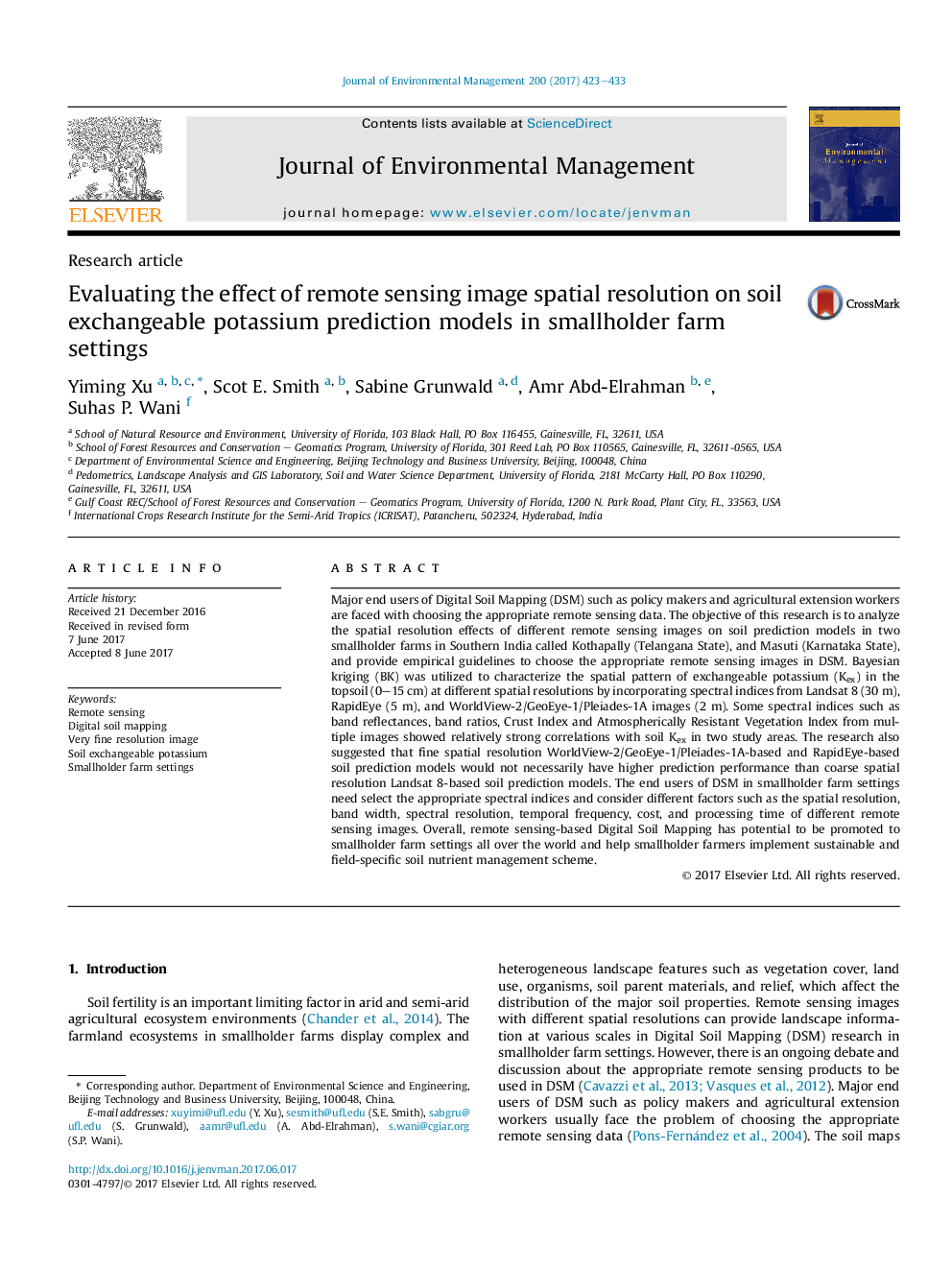| Article ID | Journal | Published Year | Pages | File Type |
|---|---|---|---|---|
| 5116352 | Journal of Environmental Management | 2017 | 11 Pages |
Abstract
Major end users of Digital Soil Mapping (DSM) such as policy makers and agricultural extension workers are faced with choosing the appropriate remote sensing data. The objective of this research is to analyze the spatial resolution effects of different remote sensing images on soil prediction models in two smallholder farms in Southern India called Kothapally (Telangana State), and Masuti (Karnataka State), and provide empirical guidelines to choose the appropriate remote sensing images in DSM. Bayesian kriging (BK) was utilized to characterize the spatial pattern of exchangeable potassium (Kex) in the topsoil (0-15Â cm) at different spatial resolutions by incorporating spectral indices from Landsat 8 (30Â m), RapidEye (5Â m), and WorldView-2/GeoEye-1/Pleiades-1A images (2Â m). Some spectral indices such as band reflectances, band ratios, Crust Index and Atmospherically Resistant Vegetation Index from multiple images showed relatively strong correlations with soil Kex in two study areas. The research also suggested that fine spatial resolution WorldView-2/GeoEye-1/Pleiades-1A-based and RapidEye-based soil prediction models would not necessarily have higher prediction performance than coarse spatial resolution Landsat 8-based soil prediction models. The end users of DSM in smallholder farm settings need select the appropriate spectral indices and consider different factors such as the spatial resolution, band width, spectral resolution, temporal frequency, cost, and processing time of different remote sensing images. Overall, remote sensing-based Digital Soil Mapping has potential to be promoted to smallholder farm settings all over the world and help smallholder farmers implement sustainable and field-specific soil nutrient management scheme.
Keywords
Related Topics
Physical Sciences and Engineering
Energy
Renewable Energy, Sustainability and the Environment
Authors
Yiming Xu, Scot E. Smith, Sabine Grunwald, Amr Abd-Elrahman, Suhas P. Wani,
